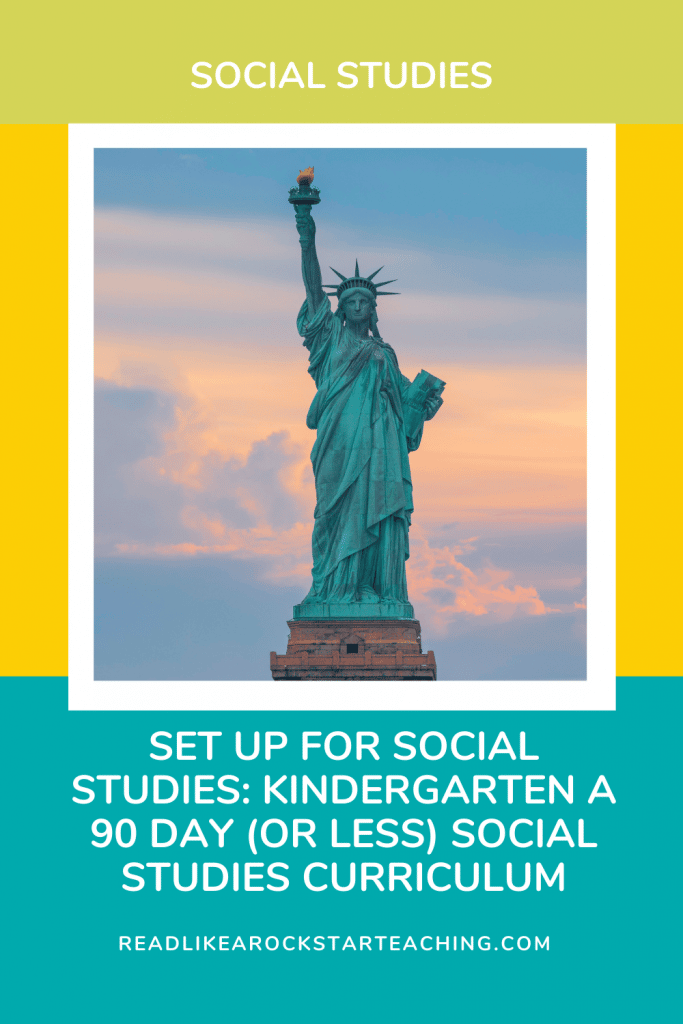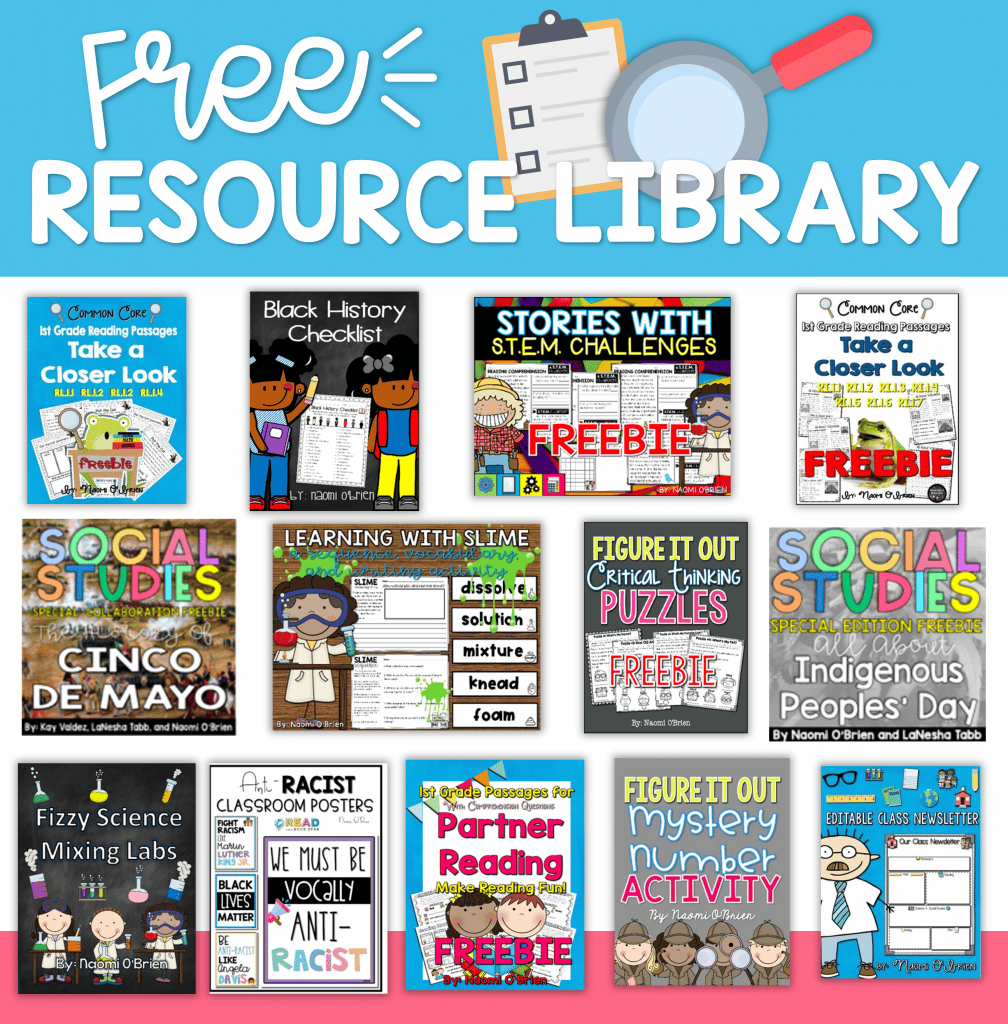

 (Click on any photo to be taken
(Click on any photo to be taken
to the resource)
You are going to LOVE this unit. It’s
easy to implement, it’s comprehensive,
#representation, and your students are going to walk
away with a great foundation of important social studies skills. We
lay the foundation in literally every other academic area, social
studies shouldn’t be an exception!
We wanted to put together a curriculum
that would give students the basics and kick start their love of
history, civics, economics, geography, decision making,
and sociology. We wanted to present these
foundational and important topics paired with images that we generally
don’t see in social studies lessons. Close your eyes
and picture images from your elementary school social studies
lessons….who do you see represented? Think about the curriculum your
school purchased a few years ago. Who’s centered? Who’s missing?
 We wanted to make sure to cover
We wanted to make sure to cover
the basics but cover them in a way where more than one group of people
might see themselves represented for various reasons.
In our teacher guides (that accompany
each lesson in all 6 units), we added our notes and gave teachers our
quick tips and considerations for the lessons.
We sought to include lessons that
pushed teachers to move beyond “just the facts” that asked them to
consider different perspectives and the truths of others. Yes,
students need to learn about goods, services, and money, but we can
cover those topics in a way that gets them thinking about how the
world works for different groups of people and to consider how those
groups are affected.
We also encourage teachers to add in
perspectives we may have missed. Use each lesson as an opportunity to
bring truth and real conversations into your classroom.
In this curriculum, you will find
everything you need to hit the ground running and lay a foundation
that will help you and your students dive deeper into other topics
during your social studies time.
There are 6 units:


Each unit consists of 8
lessons:

Student workbooks, projectable lessons,
a detailed teaching guide, checks for understanding, feelings checks,
unit reviews, vocabulary, and unit quizzes are also included in this
curriculum!
There is so much included to help you
and your students do social studies right!
Print the essential question
posters and post them in the room for the duration of each
unit and refer back to them throughout the unit.
Or show them to students virtually before
each lesson and remind them that this question will be able to be
answered confidently at the end of your unit.
Student workbooks and
assignments can be printed and bound into one large workbook
and kept in a folder, or made into 6 mini workbooks. Each unit has its
own cover page. Or, the workbooks can be assigned digitally.
PNGs have been included for your convenience so they can be added to
Google Slides or Seesaw. Directions are included in your download for
both. Pages can also be printed or virtually assigned as
needed.
Student Checks for
Understanding are built in to take place after each lesson.
Students will use a 1-4 rating system to assess their own
understanding.
We set this up in a way that students
will have an open book quiz at the end of the unit. Allow students to
use all of the lesson assignments and Unit Review Note
catcher to assist while they take their end of unit quiz.

Unit Lesson Slides are
included. Each lesson has its own slide to help teach the lessons and
engage your learners. A Turn and Talk question is
included on each slide to encourage student discussion. Virtual
learners can enjoy these discussions whole group or in breakout
rooms!


Feeling lost? Don’t worry, we’ve got
you! A Daily Lesson Guide for each and every lesson exists to
guide you along the way. We added objectives, teaching suggestions,
questions, and show you which slide corresponds with which workbook
page you’ll need for that lesson.
It’s easy! One lesson = One teacher
guide page, one teaching slide to project (or share), and one student
workbook page.
Parent and Caregiver
Notes have been included to send home or attach the image and
email it so that parents and caregivers are aware of all of the
lessons in an upcoming unit!
Unit Pacing:
So, you’re probably asking yourself how
long does all of this take? We designed each lesson to last for 30
minutes or less. We know many of us have to use the “Get in where you
fit in” model when it comes to social studies.
There are 8 lessons in each unit that
are meant to last for 8 days. There’s a day to review for the quiz,
and then a day for the quiz. Each unit has 5 vocabulary words that
should be taught one day at a time. So an entire unit would last for15
days if you did one lesson each day of the school week. (If you need
to reteach a lesson or two, based on checks for understanding, go for
it! Do what works for you.)
We also understand that holidays,
breaks, themes, and other things come up and interrupt lessons. You
might skip a day here and there to fit in an accurate Thanksgiving
lesson, or teach about Dr. Martin Luther King Jr. That’s fine! This
curriculum can be stretched out longer if you decide to visit other
themes in between units. It can be completed quickly if you power
through.
We added a pacing guide that also
includes resources we’ve created that will help you further explore
more social studies topics with your students.
Who are these lessons for?:
These lessons are geared towards 5-6
year-olds. The majority of their workbook response sheets require
them to use high order thinking, reasoning, and to explain themselves
through drawing and some writing.
What standards did we
follow?:
We took a look at several different
states across the U.S.A. and combined the elements, themes, and
standards that we saw repeated over and over again for students at the
first-grade level.
What’s included in the entire
student workbook? 

What is the vocabulary
format?:
We understand that schedules and
curriculum needs may vary from teacher to teacher. Because of this, we
included a vocabulary portion that can be covered at your discretion.
Introduce the vocabulary word (cards have been included that may be
printed and displayed in a pocket chart). Ask students to draw a
picture, write the definition, and then use it in a sentence for
context. Projectable vocabulary slides are included in each unit for
each word.
What do Student Workbook Pages
look like?:



What do unit review flashcards
look like?:
What do unit (open note)
quizzes look like?:
What does a daily lesson slide
look like?:
We understand how important social
studies is. When done right, it can be used to lay a foundation for
young learners that will grow up to be citizens in a diverse world.
Citizens that are culturally intelligent, empathetic,
and knowledgeable about the world around
them.
(Click the Image Below to Purchase)



| Cookie | Duration | Description |
|---|---|---|
| cookielawinfo-checkbox-analytics | 11 months | This cookie is set by GDPR Cookie Consent plugin. The cookie is used to store the user consent for the cookies in the category "Analytics". |
| cookielawinfo-checkbox-functional | 11 months | The cookie is set by GDPR cookie consent to record the user consent for the cookies in the category "Functional". |
| cookielawinfo-checkbox-necessary | 11 months | This cookie is set by GDPR Cookie Consent plugin. The cookies is used to store the user consent for the cookies in the category "Necessary". |
| cookielawinfo-checkbox-others | 11 months | This cookie is set by GDPR Cookie Consent plugin. The cookie is used to store the user consent for the cookies in the category "Other. |
| cookielawinfo-checkbox-performance | 11 months | This cookie is set by GDPR Cookie Consent plugin. The cookie is used to store the user consent for the cookies in the category "Performance". |
| viewed_cookie_policy | 11 months | The cookie is set by the GDPR Cookie Consent plugin and is used to store whether or not user has consented to the use of cookies. It does not store any personal data. |
Thank you for your interest in booking a private professional development experience! Please fill out our Booking Inquiry form and a member of our team will contact you soon.